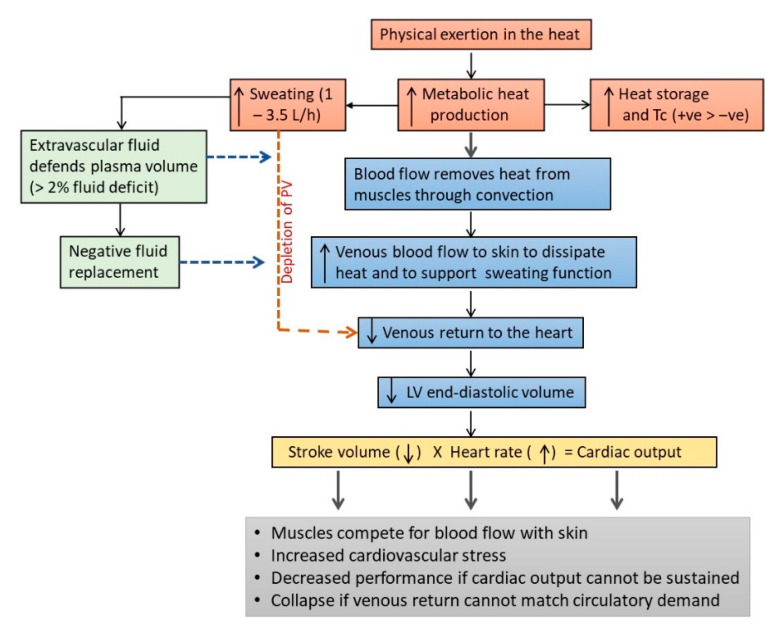Figure 2.
Effects of physical work and exercise on fluid homeostasis and cardiovascular (CVS) functions. Intense physical work can increase metabolic heat production by >10-fold, leading to an increase in heat storage and the activation of the sweating response to dissipate heat. Metabolic heat produced in the muscle is transferred to venous blood and transported to the skin to be dissipated to the environment. The diversion of venous blood to the skin reduces the volume of venous blood returning to the heart, leading to lower stroke volume and a higher stress load on CVS to maintain cardiac output and to meet the demand for muscle blood flow. The increased demand on the CVS is further burdened by the loss of plasma volume (PV) due to sweating, which can range about 1–3.5 L/h. The loss of PV can be defended by the influx of fluid from extravascular compartments, for up to about 2% loss of body weight. Beyond this level, and in the absence of adequate fluid replacement, excessive sweating can deplete PV, leading to lower blood volume to meet the demands of skin and muscle blood flow. Under these circumstances, physical work would need to slow down or cease due to the decrease in cardiac output. At the extreme, fainting may occur due to insufficient blood flow to the brain. LV = left ventricle and Tc = core temperature.

